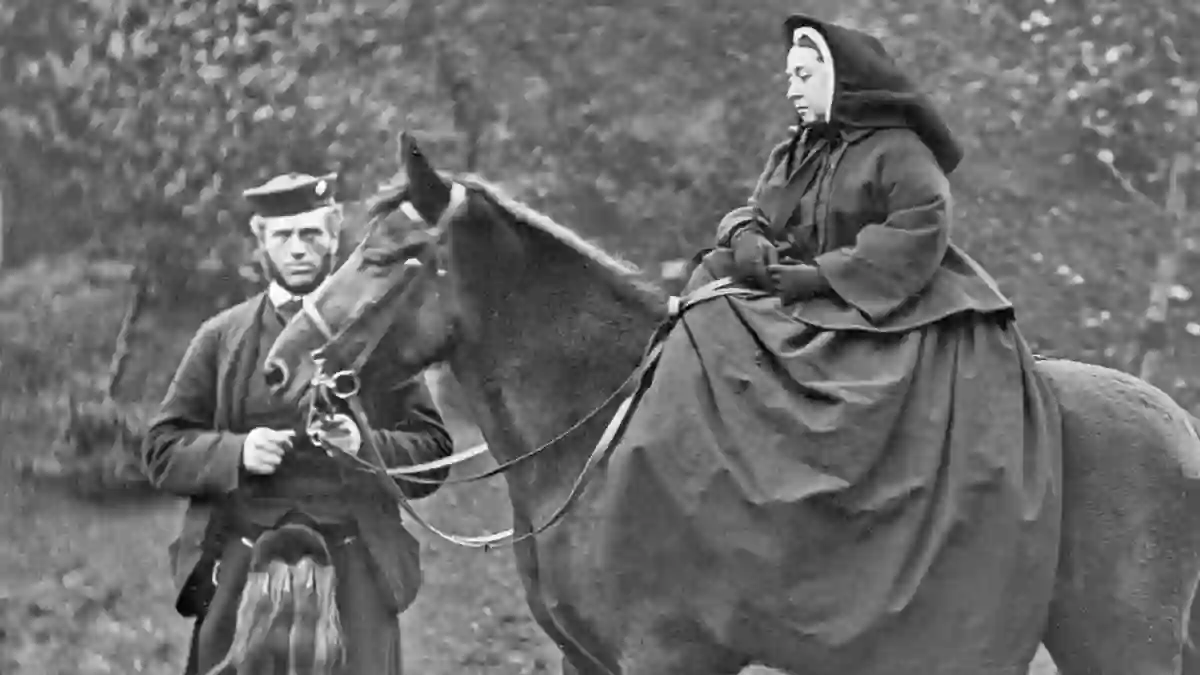It was almost midnight when I joined a Zoom call, eyes half-closed and coffee in hand.
But on the other end of the screen, the day was just winding down for Angela, a warm and energetic hospice worker dialing in from her kitchen in Minnesota.
Covered in ornate tattoos and full of laughter, Angela seemed worlds away from royal secrets.
And yet, she just might hold a piece of one of the biggest historical puzzles of the British monarchy—Queen Victoria’s mysterious bond with her Scottish servant, John Brown.
From Widowhood to Whispered Romance
Most people vaguely remember the 1997 film Mrs. Brown, where Judi Dench plays the grieving monarch and Billy Connolly portrays her rugged Highland servant.
After Prince Albert died, Queen Victoria was inconsolable, deeply withdrawn, and emotionally shattered.
But then John Brown entered the picture—not just as a loyal servant, but someone who comforted her through her darkest days.
He ran her errands, stood by her through attempted assassinations, and even slept in the room next to hers in Balmoral.
The question that’s haunted historians for over a century remains: were they simply close companions, or did something more romantic—and possibly scandalous—happen behind palace doors?
A Stormy Night and a Defining Moment
It was a stormy evening in October 1863 when Queen Victoria’s carriage overturned near Balmoral.
Grief-stricken and weary, she had been riding with two of her daughters.
Suddenly, the carriage veered violently, trapping the princesses beneath its wreckage.
That’s when John Brown sprang into action.
He tore through their skirts, freed the horses, wrapped the Queen in blankets, and found wine to calm everyone down.
He then stood guard until help arrived.
This wasn’t their first meeting—Brown had long been a familiar face at Balmoral—but something shifted that night.
Victoria began to rely on him not just for help, but for emotional support.
He was no longer just a servant. He was her protector, her confidant.
Letters, Laughter, and Love
Their bond grew deeper over time, often described as fiery but full of affection.
Victoria called him her “best friend,” and their letters are peppered with tender declarations.
In one, she tells his brother: “No one loved him more than I did,” to which John replied, “No one loves you more.”
Their relationship was so unusual for the era that it sparked constant gossip.
Courtiers started calling the Queen “Mrs. Brown” behind her back, hinting at a possible romantic or even sexual relationship.
Her daughters were even more direct—referring to him outright as their mother’s lover.
Erased From History
After Queen Victoria died in 1901, her son Edward VII did his best to erase John Brown from history.
Her journals were copied, censored, and the originals destroyed.
Even decades later, members of the royal family reportedly worked to prevent any revelations.
When a royal doctor’s diary surfaced in the 1980s revealing intimate details about the pair, Princess Margaret herself tried to suppress it.
Was There a Secret Marriage?
Could Victoria and John Brown have secretly tied the knot? In England, such a marriage would have required ceremony and formalities.
But in Scotland, all it took was an exchange of consent.
One dying royal chaplain reportedly confessed that he officiated their marriage in secret.
And in 1872, John started wearing a gold signet ring—on his left hand, the Victorian symbol of a morganatic or secret marriage.
Even more compelling, Victoria expected her sons to shake John’s hand like an equal, gave him lavish gifts, and made sure he’d be the one to care for her if she fell ill.
He wasn’t just a servant—he was something more.
A Royal Baby in Disguise?
And now comes the jaw-dropper. Among the descendants of John Brown’s brother Hugh—who had emigrated to New Zealand—there’s an unusual story passed down through generations.
Angela, one of Hugh’s American descendants, shared with me that the family always believed they were from a “secret royal bloodline,” tied to a baby that was handed over to be raised by relatives far away from the palace spotlight.
Was Mary Ann, Hugh’s daughter, actually the child of Victoria and John Brown, born in secrecy and sent abroad to protect the monarchy’s reputation? There are even clues in official documents showing the Royal Household had an odd level of involvement in the guardianship of Mary Ann’s children.
Signs Hidden in Plain Sight
If you look closely, the relationship between Victoria and John Brown was written in the smallest of details.
She gave him a silver teapot for his birthday, a Christmas card filled with affection, and even allowed him to smoke in her presence—a rule no other man could break.
When he died at age 56 after falling ill in pursuit of intruders, Victoria was devastated.
She had his hand cast in stone, just like she had done with Albert.
She wore a mourning locket with his photo and hair, and even slipped on his mother’s wedding ring.
That ring was still on her finger when she was buried nearly two decades later.
A Love Story Lost to Time?
For all the love and symbolism, definitive proof remains elusive.
Much of the written evidence has been destroyed, and the Royal Family continues to keep many archives under lock and key.
Without DNA confirmation, the mystery remains—was there a hidden marriage? A secret royal baby? Was the Queen’s heart given not just to Albert, but to a Highland servant who risked everything for her?
What we do have are the whispers, the letters, the gifts, and the unshakeable bond between two people who dared to defy the rules of their time.
Final Thoughts
This isn’t just a historical whodunnit—it’s a human story about grief, love, loyalty, and legacy.
Whether or not Angela is truly Queen Victoria’s great-great-granddaughter, one thing is clear: this royal romance, hidden in the shadows for over a century, still has the power to fascinate, stir hearts, and challenge everything we thought we knew about Britain’s most iconic monarch.
